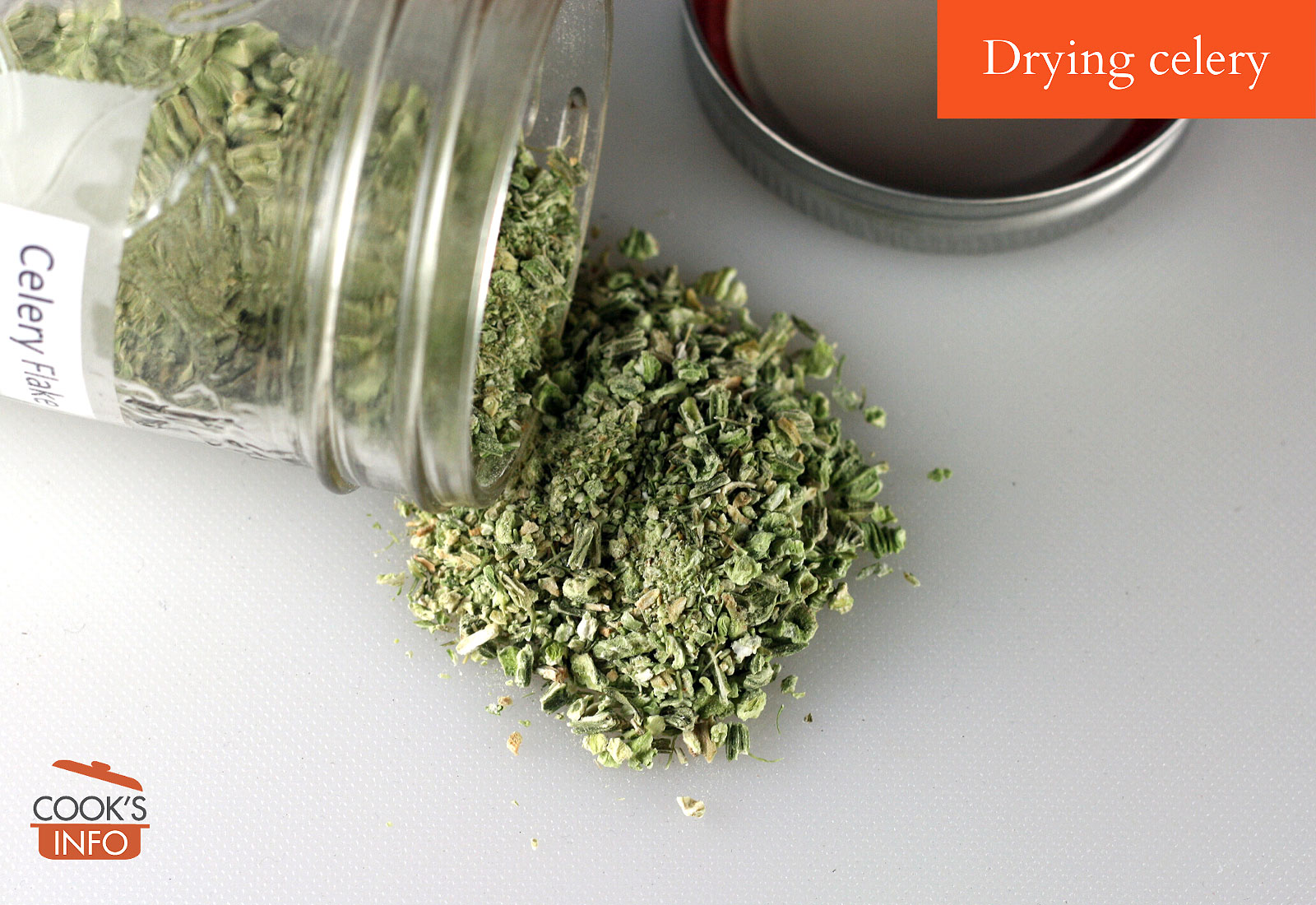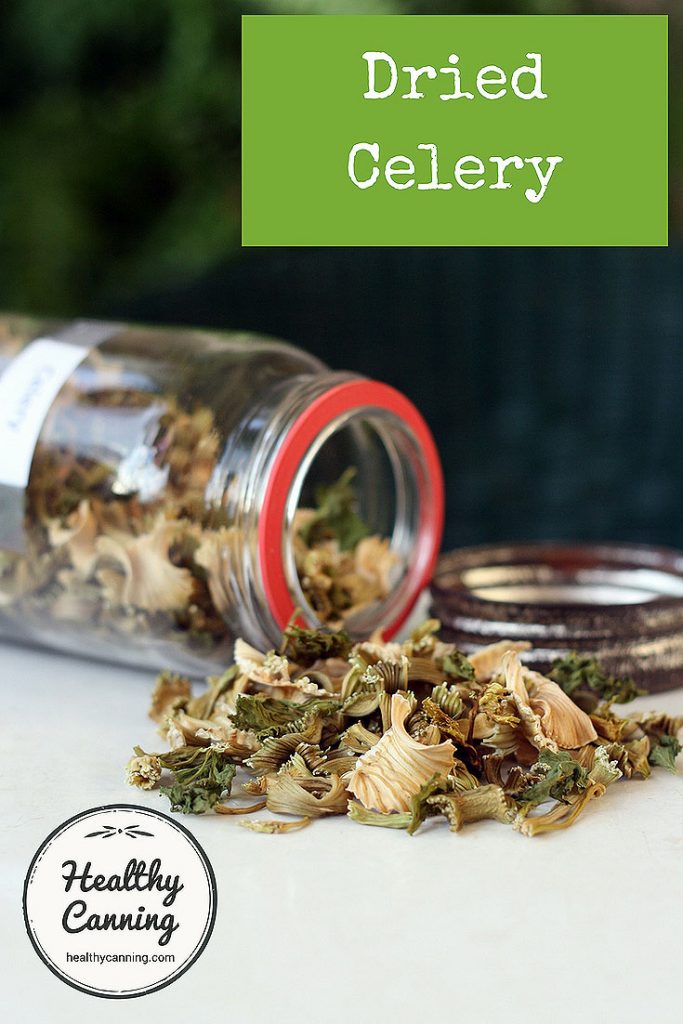Here are directions for drying celery for storage.
Most reputable sources agree that the results of drying celery are poor — as far as using it as a vegetable goes afterward.
However, it still shines for use as a seasoning, either as small pieces, or especially when pulverized into flakes or ground into a powder and used as a seasoning.
See also: A discussion of using celery in home canning.
Yields and Equivalents
500 g (17.5 oz) / 4 cups fresh celery sliced = 25 g / (1 oz) / ½ cup dried celery slices = 25 g / (1 oz) / ¼ cup dehydrated celery flakes
Directions
Here we compare directions from three different sources.
Ball All New
Preparation: Wash. Trim and cut into ¼ inch (.5 cm) slices.
Blanching: Steam blanch 4 to 6 minutes
Temperature: 125 F / 52 C
Time: Until crisp and hard.
Notes: Choose green, crisp ribs.
Reference: The Ball All New (2016, page 338)
Excalibur
Preparation: “Scrub the stalks and leaves to remove dirt; peel coarse strings and cut stalks into ¼″ strips. (The leaves should remain whole.)” If desired, blanch.
Blanching: “Steam blanch 2 to 3 minutes, or water blanch 30 seconds to 1 minute in a baking soda solution of 1 teaspoon baking soda per cup water.
Temperature: 125 F / 52 C
Time: Until stalks are leathery and leaves are brittle. 3 to 7 hours, depending on humidity in your region.
Quality: Poor
Reference: Excalibur. Preserve it naturally. 4th edition, 2012. Pages 27 and 62.
So Easy To Preserve
Preparation: ‘Trim stalks. Wash stalks and leaves thoroughly. Slice stalks.”
Blanching: Steam blanch 2 minutes; water blanch 2 minutes.
Temperature: Temp 140 F / 60 C.
Time: 10 to 16 hours.
Quality: Poor
Reference: So Easy To Preserve. 6th Edition. 2014. Page 349.
Notes
Dry the leaves as well, they make excellent seasoning.
Lovage leaves can be dried in the same way (no need to blanch) and treated as dried celery leaves for powdering.
When drying both leaves and stalks at the same time, separate them on different trays, as the leaves will dry much faster.
It can be hard to spread leaves out fully at the start on trays if you have a lot of them as they take up a lot of space. A few hours into drying, they will have begun to shrink, so you can intervene at that point and spread them out better.
Water blanching in baking soda, as per Excalibur’s suggestion above, would likely yield a more vibrant green colour after drying.
Peeling the fibrous strings away, as per Excalibur’s suggestion above, is probably less necessary if your intention is to grind the dried celery to a powder.
Storage
Let the dehydrated product cool completely to room temperature before packing it into storage containers.
Watch the sealed containers for the first few days for any sign of condensation. If condensation occurs, dehydrate a bit more.
Label jar with name of product and date. Store away from heat and direct light.
Usage notes
To rehydrate, cover with boiling water and let soak until soft.
When using in recipes such as soups or stews that have a lot of liquid in them and are long cooking, many people say they just toss the dried celery pieces directly in. However, for drier recipes, you’ll certainly always want to rehydrate first. Remember that the water you use to rehydrate them can be used towards any water that the recipe you are making calls for.
Fine celery flakes (made by whizzing pieces of dried celery in a food processor) could be mixed with salt or salt sub to make a homemade celery salt.




Leave a Reply